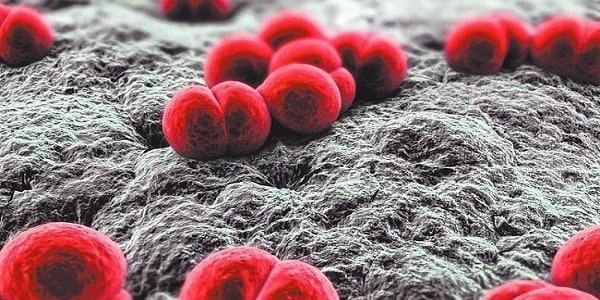Waterhouse-Friderichsen syndrome

Description
Waterhouse-Friderichsen syndrome or hemorrhagic adrenalitis or fulminant meningococcemia is defined as adrenal insufficiency caused by a severe bacterial infection – most often with the meningococcal bacteria Neisseria meningitidis.
Another definition of the disease is acute and severe meningococcemia with hemorrhage in the adrenal glands.
What are the causes?
The most common causes are:
• Group B streptococci;
• Pseudomonas aeruginosa;
• S. Pneumoniae;
• Staphylococcus aureus;
In rarer cases, the disease can be caused by the use of medications that help blood clot.
Other possible causes are:
• Primary antiphospholipid syndrome;
• Thrombosis of the renal vein;
• The use of steroids;
The disease usually occurs in infants or in children under 10 years of age and less often in adults. It develops in between 10 and 20% of children with meningococcal infection. p>
The syndrome is characterized by large petechial hemorrhages on the skin and mucous membranes, fever, septic shock, and disseminated intravascular coagulation.
Clinical picture
The initial manifestation of the syndrome is dramatic and sudden. Non-specific symptoms are a high temperature, which is initially moderate and then becomes very high above 40-41 degrees Celsius, chills, cough, vomiting and headache.
Characteristic signs are also sores in the corners of the mouth, dysphagia and atrophy of the tongue. A rash soon appears, which is at first macular, but not much different from the pink spots of typhoid fever, but rapidly becomes petechial in purplish color, and sometimes large cutaneous hemorrhages develop, often followed by necrosis and cracking. Patients develop cyanosis of the extremities as a result of generalized vasoconstriction.
What are the possible complications?
• Shock, extensive bleeding on the skin and falling into a coma.
• Death occurs after a few hours with the proximate cause being adrenal insufficiency.
• Those who manage to recover may have severe skin damage due to cracking, such as the loss of a finger on his hands and feet, due to the gangrene.
• Meningitis in most cases does not develop;
Treatment of Waterhouse-Friderichsen Syndrome
The combination of therapies used is identical to that of meningococcal infections, acute meningococcemia is a clinical emergency and the treatment with antibiotics should be started as soon as possible.
The most commonly used is ceftriaxone, which is a third-generation cephalosporin antibiotic. Like other third-generation cephalosporins, it has a broad spectrum of activity against Gram-positive and Gram-negative bacteria.
In most cases it is considered equivalent to cefotaxime in terms of safety and efficacy. Benzylpenicillin and especially chloramphenicol are a good alternative for allergic patients. Hydrocortisone 200 mg is used to support the function of the adrenal glands. per square meter of body surface every 4 hours.
Hydrocortisone can sometimes reverse the shock caused by adrenal dysfunction. Hypovolemia is treated with colloids, dopamine, and coagulation factors. Sometimes plastic surgery is needed to correct the tissues affected by the necrosis.
How to protect ourselves?
Specialists recommend routine vaccination against meningococci to teenagers aged 11-18 and to all people who have problems with the functions of the spleen, such as has been removed or have sickle cell disease, which damages the spleen.
Similar vaccination is also strongly recommended for people with immune system disorders, such as complement deficiencies. In Bulgaria, the mandatory immunization calendar only includes vaccination against one of the possible causes of the disease – the S.Pneumoniae bacterium.



